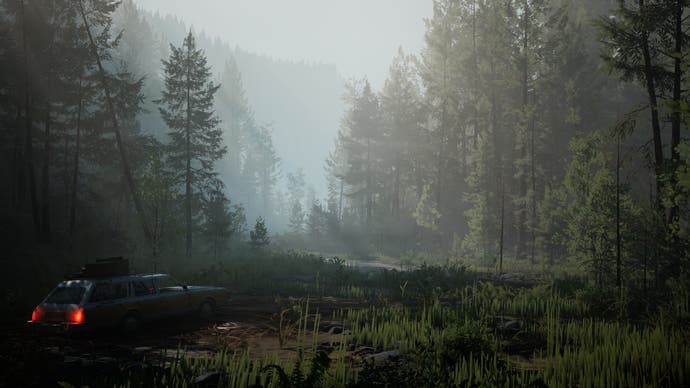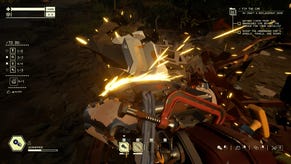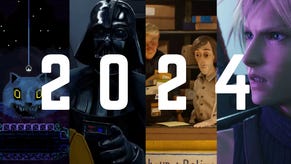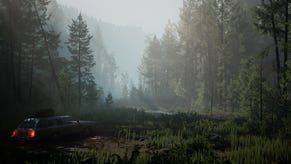Pacific Drive is a gloriously horrible trip into the cursed wilderness
Roadside Picnic.
There are a lot of ways you could describe Pacific Drive, I think. It's sort of an extraction looter, in which you tumble into horrible worlds and try to emerge with something worth stealing. It's sort of a blend of Roadside Picnic, the novel about scavengers who explore a strange area of wilderness that's been thoroughly messed up by passing aliens, and My Summer Car, the Steam outsider art classic about building and maintaining a real junker and then tooling it through the woods. These are all fine ways of approaching the game, but for me it's much simpler - and much more thrilling. Pacific Drive is a series of bad things waiting to happen to you.
Let's make this clear: it's a science fiction game at heart. You cobble together an old station wagon and then drive it through the Zone, an expansive chunk of the Pacific North-West that has been rendered uninhabitable through secret government experiments. But often, and, I would argue, when the game's at its most horribly lovable, you get these off-the-cuff setpieces that are just built from accidents and unintended consequences.
Bad things waiting to happen. So this morning I was deep in the Zone, deeper than I'd ever been before. The wind was raging. The rain was falling. The sky was filled with ominous black specks, like a murmuration frozen in a single fleeting instant. For some reason I was tooling through woodland in my station wagon, negotiating trees in very limited visibility. And for some other reason I thought I saw something interesting, so I stopped the car and got out.
At this point I realised a couple of things. Firstly, whatever I'd seen would probably kill me, so I should probably leave it be. Secondly, hey, I was on a gradient - the whole stretch of woodland was actually some humble strain of hill. Thirdly, that meant that my car was actually rolling backwards away from me, and if I wanted to get back in I should probably be pretty quick about it.
So I rushed back to the car, and wrenched open the door. Wrong door. I'd wrenched open one of the back doors, and on the passenger side too. No time to close it. I raced around the back of the car and got to the driver's door. Yanked that open. Got in. Drive? I had a back door open and flapping in the breeze. Also various alarms were going off. Also, I must have hit myself on the moving car because my health monitor told me I was almost dead. Also, I'd just turned on the windscreen wipers instead of grabbing the wheel.
In case you can't tell, all of this was thrilling. And deadly: that run, as it were, did not go well after that. But it highlights a couple of things that are great about Pacific Drive. You're safe until you suddenly aren't. Your car is a source of additional safety, but it's also irritatingly fragile. Bad things will happen in this fiddly, frustrating, ingenious simulation, but most of the really bad things can be traced back to that old insurance favourite: driver error.
It took me quite a while to get to this point with Pacific Drive. I've had a preview build for the last few weeks, and at first I kept bouncing right off it. It's not that the game starts slowly. It's more that it took a while for me to properly get to grips with it. At first I was all elbows.
The analogy I would make is that a lot of driving games, and a lot of survival games, even, are like those point-and-shoot cameras that do everything for you. They choose the focal point. They handle the light. They even advance the film - if you're using film - when you take a picture. Not Pacific Drive. Pacific Drive is like a cool old Soviet TLR: you have to select aperture and shutter speed and focus the image yourself. You have to prime the shot and then take it. And after that you need to remember to advance the film so you don't get a double exposure.
Okay, that analogy got away from me, but look at the opening sections of Pacific Drive. You're driving through forests in a fairly nice car until, suddenly, everything goes weird and you're on foot, moving through some hellish Zone of cursed science and radioactive anomalies. You find a junker by the road and coax it into driving. Compared to the car you were just in, it's a shambling horror, a true Rocinante. You follow crackling radio instructions that lead you to an abandoned garage filled with bizarre cobbled-together tech. Using this tech, you bring the car back to life - just as much as you can. And then you plot another journey out into the Zone and do it all over again.
This is the basic loop of Pacific Drive: fix your car up with what you have, head out to the Zone, to find more stuff for your car, to improve your garage, to learn more about what's going on, and then make it back to your garage again where you fix everything up once more so you can head out again, but in better nick, with better gear, and maybe heading a bit further out this time and learning a bit more.
None of this is easy, though, and my sense, after a couple of days' play, is that Pacific Drive wants to be this elbowy and tricksy. The menus for storing items, moving them around, equipping them and fitting them onto your car are all rather fiddly. You need to know that car putty will heal a panel, you need to know where to charge your batteries and you need to remember to refill your gas. Lots of things rely on the difference between pressing a bumper once and holding the bumper for a while - this is the difference between opening your door and getting in and just opening the door, for example. There's scanning stuff, crafting stuff, crafting smaller stuff in order to craft bigger stuff. At times, early on, Pacific Drive feels like a nest of expanding and collapsing menus waiting to fry your brain.
But out on the road it's just as awkward. And gloriously so. Your car handles like a wreck, rattling along the ground at no great speed and taking damage the moment you leave the tarmac. The Zone throws up all kinds of odd things at will: electrical barriers, Raft of the Medusa-style tableaux formed by crash-test dummies, funny little gnarls of metal that hop onto your car and mess things up until you remove them, awful scary hovering craft that hook on and drag you away from your destination.

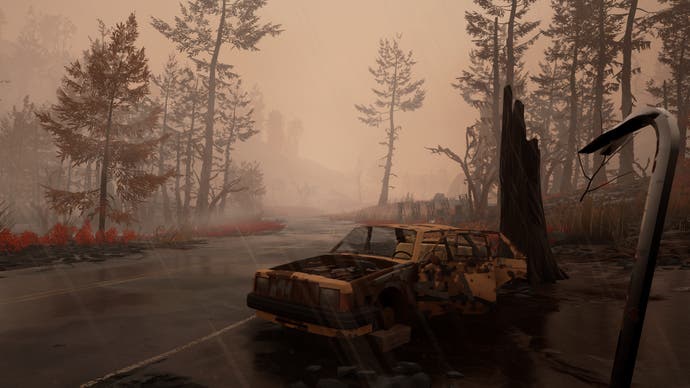
For the first few missions, your trips into the Zone are for simple things at least. Get the materials for an antenna to rig up back at the garage to allow you to venture further out, scan a certain number of anomalies. But getting back home is its own wild trip, regardless of how straightforward the mission was. You can't just turn around in space-time that's been as thoroughly busted as it is in the Zone. Instead you need to collect a series of "anchors", little gadgets scattered around the map, and load them into your car at which point a column of light will appear in the distance signalling the position of your exit portal.
And as it does, I swear that the Zone, which was terrifying and unpredictable already, only gains in strength. Rocks take to the air. Shadows loom closer. The storm gets worse. The road gets worse. Things crackle and spark and swing at the car as you dash, dash, dash towards that column of light eager to get home again, sorry you ever ventured this far. The steering wheel bucks in your hand, the tarmac won't lead where you want it to. Who knows how long that portal will remain open? It's horrible. It's brilliant. It's almost unbelievably stressful. It's Pacific Drive.
